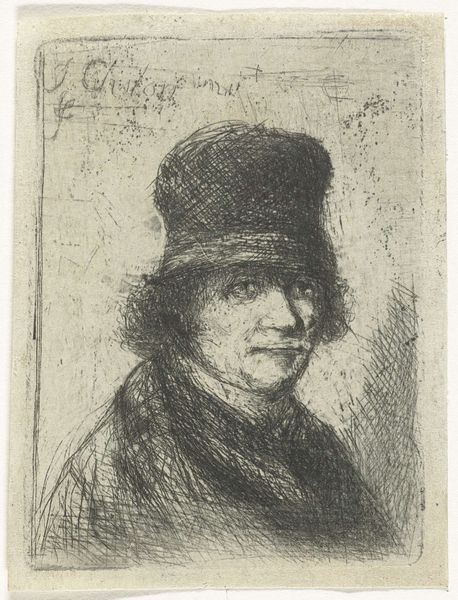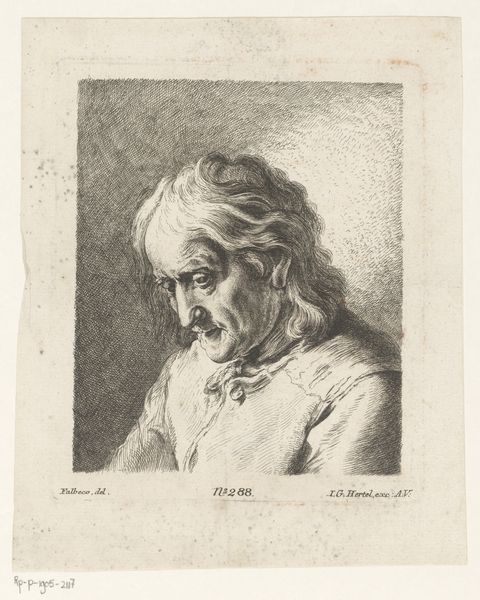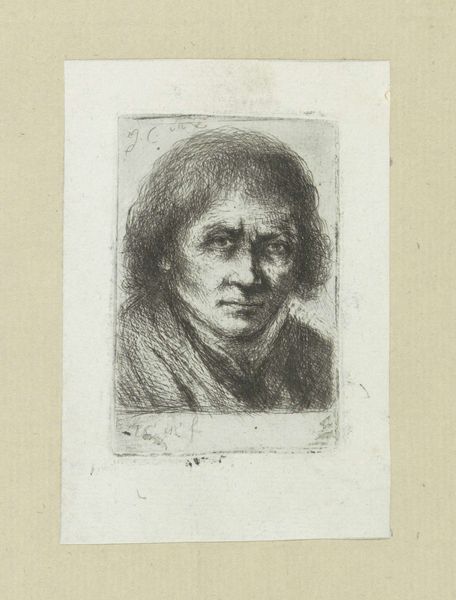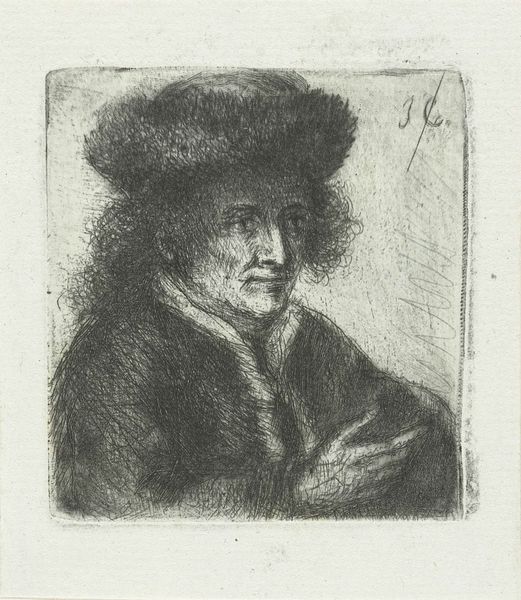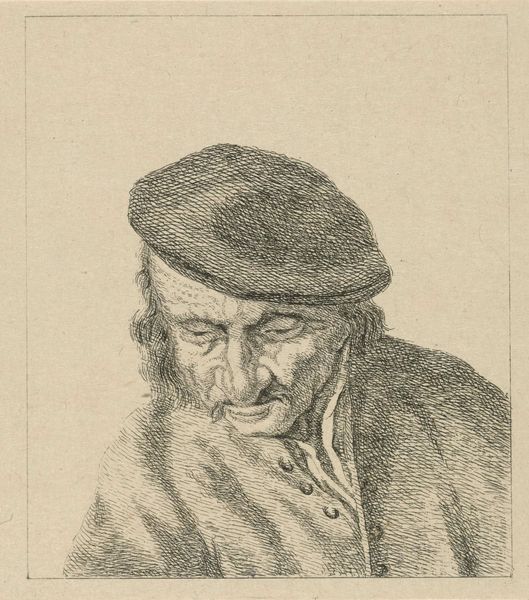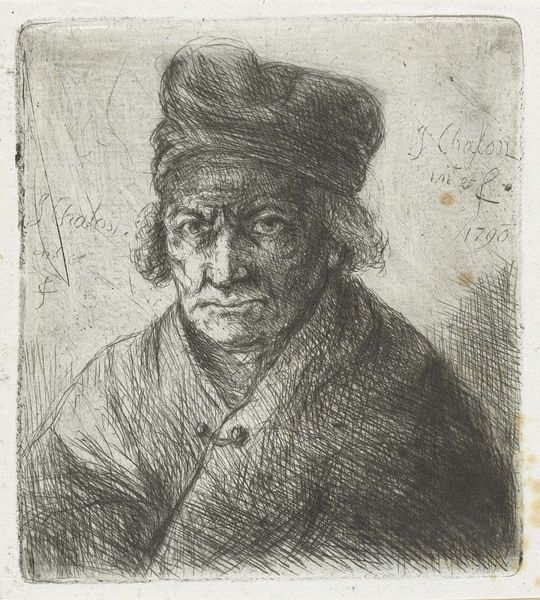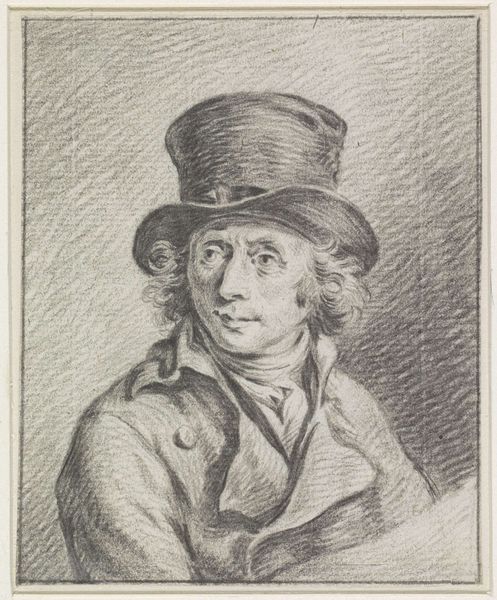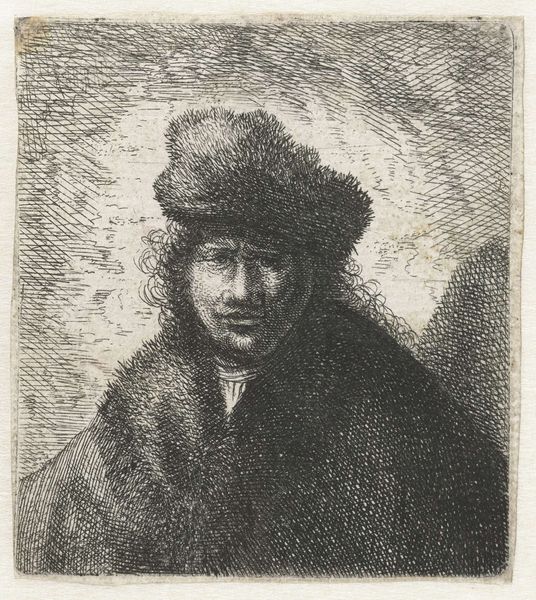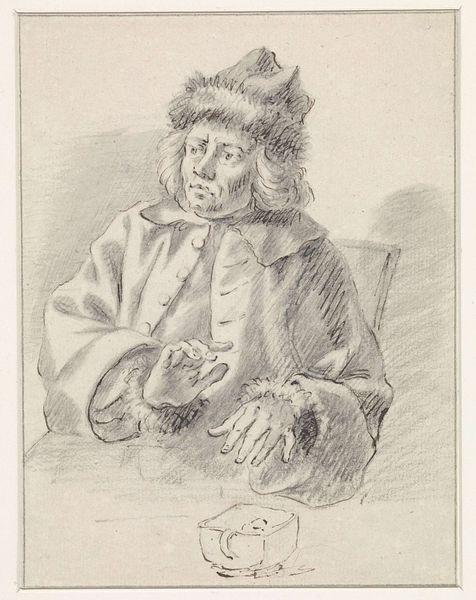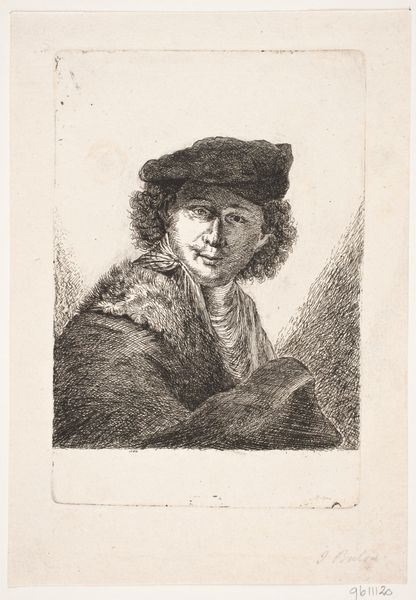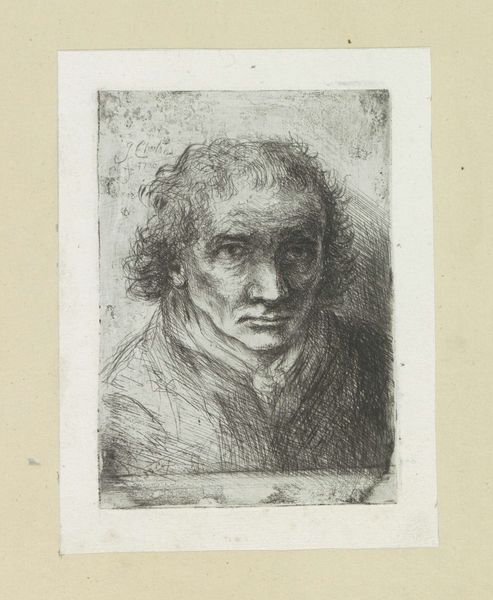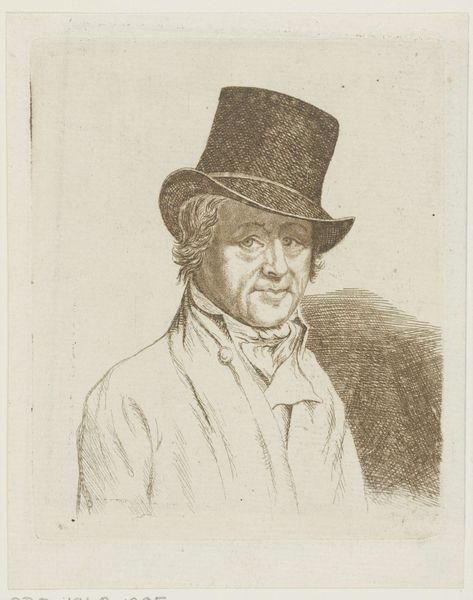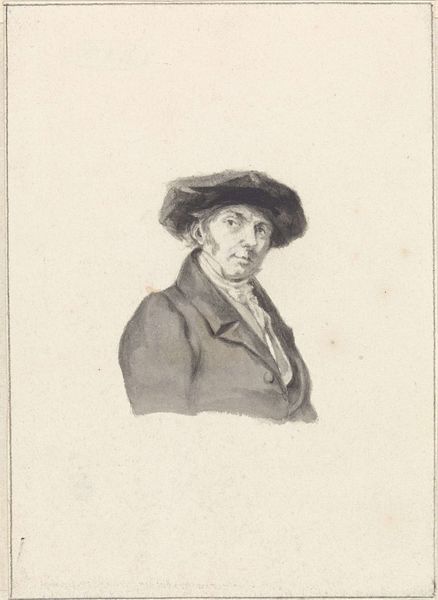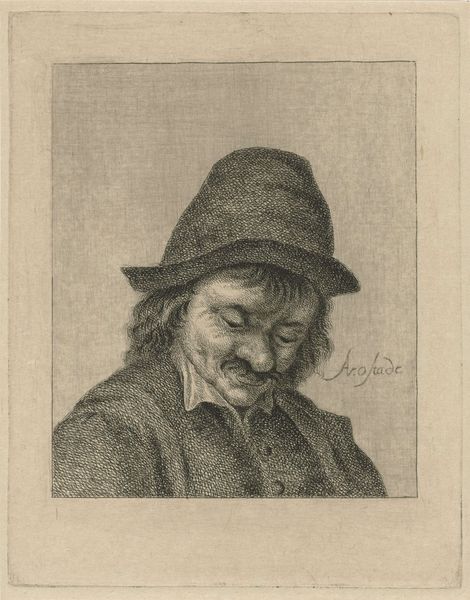
drawing, pen
#
portrait
#
drawing
#
pencil sketch
#
pencil drawing
#
pen
#
portrait drawing
#
history-painting
Dimensions: height 123 mm, width 105 mm
Copyright: Rijks Museum: Open Domain
Curator: Let's discuss Joannes Bemme's "Head of an Old Man with a Fur Cap," dating back to 1804. It's a remarkable drawing housed here at the Rijksmuseum. Editor: My immediate reaction is the density of texture! The fur cap dominates, a soft, yielding form created with astonishing precision. And the downward cast of the man's face brings a mood of deep reflection. Curator: Indeed. Consider the historical context; this piece was created during a period of significant political upheaval in the Netherlands. The detailed portrayal of the elderly man could symbolize resilience amidst instability, reflecting a desire to honor wisdom from past generations. Editor: I appreciate the texture, yes, but I am also struck by the geometric construction of the subject's silhouette, juxtaposed with his softly wrinkled skin and brow. Bemme uses hatching to model form—creating a play between darkness and light—a visual manifestation of the aging process itself. Curator: Interesting point. Bemme's choice of medium is crucial. Pen and pencil, accessible materials, would align with the democratizing impulses of the era, bringing art to the people. Furthermore, the "ordinary man" is made monumental by bestowing his portrait, so a drawing like this participates in shaping public perception. Editor: While acknowledging its social resonance, the true marvel lies in its execution. How line weight, composition, and the very materiality of the pencil all come together to define form and evoke mood. Notice the negative space around the cap. Curator: But don’t we need to also see the artwork as a reflection of Enlightenment ideals and the burgeoning interest in realism and naturalism and how those cultural trends affected its reception? Editor: Context enriches understanding, of course, but Bemme’s skillful use of contrast between line and shadow is the root of what generates meaning here, imbuing an unassuming drawing of an everyday man with palpable dignity and humanism. Curator: You've highlighted fascinating formal elements. My approach considers this artwork’s meaning within its era’s complex social tapestry, reminding us of its importance to Dutch national identity at the turn of the nineteenth century. Editor: And by carefully evaluating its artistry, we are better equipped to evaluate it within history.
Comments
No comments
Be the first to comment and join the conversation on the ultimate creative platform.
